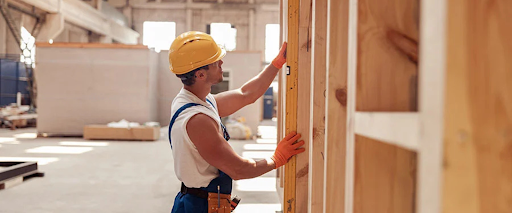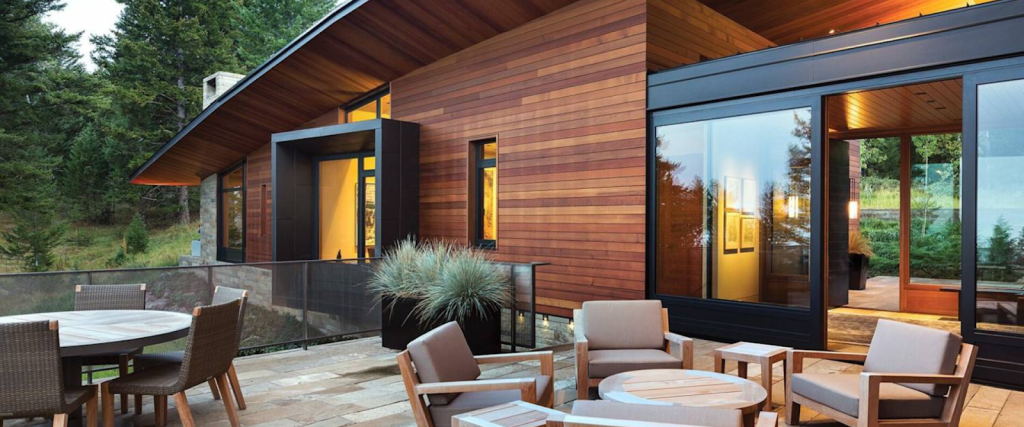Choosing the right siding is a big decision that affects both curb appeal and long-term durability. Many homeowners across Long Island ask us the same thing: How durable is wood siding?
So, how long does wood siding last? Typically, it lasts between 20 and 40 years, or even longer with proper care and maintenance. Its longevity depends on the type of wood, local climate, and routine maintenance. In coastal or humid areas, untreated wood can wear down more quickly, but with consistent maintenance, it can last for decades.
In this blog, we’ll break down the factors that impact wood siding lifespan, share essential wood siding maintenance tips, and show you how to spot early signs of wear. You’ll also learn when to repair or replace your siding and how expert support can help extend its life.
What Is Wood Siding?
Wood siding is a natural exterior cladding option valued for its aesthetic appeal and versatility. Available in styles such as clapboard, shingles, or board-and-batten, it suits a variety of architectural designs. Common wood types include cedar, pine, and redwood, each with distinct grain patterns and varying levels of durability. Homeowners love wood siding for its warmth and classic look, but the lifespan of wood siding varies based on maintenance and environmental factors. With proper care, it can enhance your home’s value and charm for years to come. For top-quality results, trust experienced professionals offering the best siding installation services on Long Island, NY.
Types of Wood Siding
- Cedar: Naturally resistant to rot and insects, ideal for humid climates.
- Pine: Affordable but requires regular maintenance to prevent decay.
- Redwood: Durable and weather-resistant, with a premium price tag.
- Engineered Wood: A cost-effective alternative mimicking natural wood’s look.
Each type impacts how long wood siding lasts, so choosing the right material for your home’s needs is key.
How Long Does Wood Siding Last?
The wood siding lifespan typically ranges from 20 to 40 years, but this varies based on several factors. High-quality materials, such as cedar or redwood, combined with consistent wood siding maintenance, can significantly extend longevity. Poor upkeep or harsh weather can reduce its lifespan to 15 years or less. For example, homes in coastal areas, such as Nassau County, face salt exposure, which may require more frequent maintenance. Working with a trusted siding contractor ensures proper installation and guidance to maximize durability.
Factors Affecting Wood Siding Lifespan
Several elements influence how long wood siding lasts:
- Wood Type: Cedar and redwood outlast pine due to natural oils.
- Climate: Rain, humidity, or extreme sun can accelerate the degradation of wood.
- Installation Quality: Proper installation prevents moisture infiltration.
- Maintenance: Regular cleaning, sealing, and painting extend lifespan.
Understanding these factors helps homeowners plan for long-term care and avoid premature siding repair.
Wood Siding Maintenance Tips
Proper wood siding maintenance is crucial to extending its lifespan. Without proper care, wood siding can warp, crack, or rot, especially in areas like Suffolk County, where changing weather and humidity can accelerate deterioration. Whether your home is new or historic, regular maintenance protects your investment and keeps it looking its best.
Regular Cleaning
Dirt, mildew, and algae tend to accumulate over time, particularly in shaded or damp areas. Wash your siding at least once a year using a mild detergent and a soft-bristled brush. Avoid high-pressure washers, which can splinter or erode the wood. Clean siding not only improves appearance but also helps prevent long-term decay. This kind of siding maintenance can make all the difference in performance.
Sealing and Staining
Apply a quality sealant or stain every 3 to 5 years to safeguard against moisture and UV damage. Stains also bring out the wood’s natural grain, while sealants form a protective shield. Look for fading, bubbling, or peeling to know when it’s time to refresh the surface.
Painting
A fresh coat of paint every 5 to 7 years enhances protection and gives your exterior a clean, updated look. Always use exterior-grade paint made for wood surfaces. Sanding, priming, and applying two coats will ensure the finish holds up over time.
Inspecting for Damage
Conduct visual checks twice a year to look for signs of rot, cracking, or insect activity. Water-prone areas, such as those under gutters or near foundations, should receive extra attention. If you’re unsure about damage, call a trusted siding contractor for a professional opinion and timely repair.
Preventing Moisture Issues
Since moisture is the leading threat to the lifespan of wood siding, it’s essential to take proactive steps. Clear your gutters regularly, slope soil away from your foundation, and trim back bushes or trees that block airflow. These efforts reduce the chance of rot, mold, and pest infestations, keeping your siding solid for years to come.
Benefits of Wood Siding
Wood siding offers unique advantages:
- Aesthetic Appeal: Its natural texture complements any home style.
- Eco-Friendly: Wood is a renewable and biodegradable material, unlike vinyl siding.
- Customizability: Paint or stain it to match your vision.
- Insulation: Wood provides natural insulation, improving energy efficiency.
These benefits make wood siding a top choice for homeowners seeking beauty and sustainability.

Challenges of Wood Siding
While wood siding shines in aesthetics, it comes with challenges. It requires more upkeep than alternatives like vinyl or aluminum. Without regular wood siding maintenance, issues like rot, warping, or fading can occur. Harsh weather in areas like Huntington or Melville can accelerate wear and tear. Insects, such as termites, may also pose a threat. Partnering with experts for siding installation or repairs helps mitigate these challenges, ensuring your siding remains durable and attractive.
How to Extend the Life of Your Wood Siding
Maximizing how long wood siding lasts requires proactive care:
- Choose Quality Materials: Invest in durable woods like cedar or redwood.
- Hire Professionals: Proper siding installation prevents future issues.
- Stay Consistent with Maintenance: Follow cleaning and sealing schedules.
- Address Repairs Promptly: Fix cracks or rot immediately to avoid spread.
- Upgrade Ventilation: Ensure your home’s exterior allows airflow to reduce moisture.
By following these steps, you can enjoy your wood siding for decades.
Why Choose Selective Remodeling for Your Siding Needs?
Selective Remodeling provides premium exterior solutions for homes and businesses throughout Long Island, NY. Our licensed and insured team specializes in siding installation, repair, and replacement, delivering results that meet the highest standards of quality and craftsmanship. We take the time to understand your needs, offering expert recommendations with transparent timelines and clear, upfront pricing.
Final Remarks on Wood Siding Lifespan and Maintenance
So, how long does wood siding last? With proper care, it can last 30 to 40 years or more. Without it, problems like rot and warping can show up much sooner. Staying on top of regular cleaning, sealing, and repairs is key to protecting your home’s exterior.
Good siding maintenance not only extends the life of your siding but also keeps your home looking its best throughout the year.
FAQs
How often should I maintain my wood siding?
Perform annual wood siding maintenance, including cleaning and inspections. Seal or stain every 3 to 5 years, and repaint every 5 to 7 years.
Can wood siding last longer than 40 years?
Yes, with excellent wood siding maintenance and high-quality materials, some siding, such as cedar, can last over 40 years.
Is wood siding better than vinyl siding?
Wood siding offers superior aesthetics and eco-friendliness but requires more upkeep than vinyl siding. Your choice depends on your priorities and willingness to maintain.

